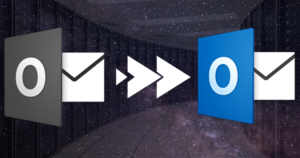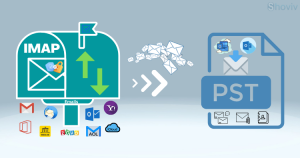In the world of technology, data, especially emails, are considered a backbone of businesses, as they contain sensitive information and files. Keeping old emails managed is a significant and hectic task for organizations as they can be required in the future; you must have handled them well to be available when needed. Nowadays, technology is slowly moving towards the cloud, and Office 365 is the best and most featureful cloud-based that also provides Outlook as an email service.
With the growing popularity of the cloud, users are now seeking a way to import old emails into Outlook, which comes as a part of an Office 365 subscription. However, the process of importing emails into Outlook is only some people’s cup of tea because the only way to move any emails into Outlook is to convert them into PST format.
In this write-up, we’ll discuss how you can import old emails from different email services into the Outlook 365 desktop app.
Why will you need to import emails into Outlook?
Outlook is a product of Microsoft, and since the release of Office 365, several organizations have picked it to enhance their business productivity. Outlook is also a part of Office 365, so users must import old emails into Outlook. Apart from this, there are several other reasons:
- PST, a file format used by Outlook, is considered the best file format to store data, and users can encrypt their PST files with a password, which also makes it secure.
- Your current email account may be out of space, and you want to save your emails in a local drive. The PST is the best option for you.
- Outlook allows creating profiles for maximum email services, including Office 365, Exchange Server, Thunderbird, etc. You may want to import old emails into these email services or from these email services.
These are only a few reasons why some users might need to import old emails into Outlook. If you didn’t find your reason here, then don’t worry. Every business and individual can have different reasons. Now, let’s know how you can import email into Outlook.
How to Import Email into Outlook?
The first and possibly most straightforward way to import old emails into Outlook PST is using Outlook’s import/export wizard. As mentioned above, Outlook allows the creation of an Outlook profile for most email clients, and you can simply create an Outlook profile and use the import/export wizard to import email into Outlook PST format. Let me show you the complete process.
Note: We have divided the process into 2 phases so it will be easy for you to understand and follow.
Phase1: Create an Outlook Profile for the Email Account
In this phase, we’ll create an Outlook profile for your account from which you want to import your old emails.
-
- Open Outlook and click on the Add Account option.
-
- Select the check box adjacent to Manual setup or additional settings and click Next.
-
- Provide the account credentials from where you want to import the emails. Enter the Server Name, Port, and Encryption method. Click Next.
-
- Outlook will run the credentials testing; if everything goes right, it will create an Outlook profile for your account.
Phase2: Import data into Outlook PST File Format
-
- Open Outlook and log in with the profile we created in the first phase.
-
- Now go to the File, select Open & Export, then click Import/Export.
-
- Select Import from another program or file option and click Next.
-
- In the following dialogue, select Outlook data file .pst as file format and proceed by clicking on Next.
-
- Following, select the location to save the resultant PST file.
It is a simple process that allows you to import emails into Outlook 365’s PST format and access them with Outlook. It is a free-of-cost method but not free from limitations.
The method only allows importing emails from one email account. Hence, if you have a large number of emails/mailboxes to import, you’ve to repeat the same process over and over. Apart from this, you cannot filter out unwanted emails from the process.
One-stop solution to import emails into Outlook PST: Shoviv IMAP Backup and Restore Tool
Shoviv IMAP Backup and Restore Tool is specially developed to backup or export IMAP server-based email clients into PST format. The software can import more than 15 email clients’ inboxes into Outlook PST format, and if required, you can also restore these PST files to mailboxes. Some popular email clients you can export into PST are Zoho, Gmail, Yahoo, Office 365, Exchange server, Hotmail, AOL, etc.
Some of this tool’s other features are as follows:
- The software offers a filter option based on several criteria (Date range, folder filter) to include or exclude specific emails from exporting into PST format.
- You can add multiple mailboxes of any size to the process and import old emails into PST without interruption and repeating the same process.
- The software displays a complete log report of the process so you can ensure what emails have been imported into PST format.
- You can split the resultant PST into the desired size. Creating small PST files also saves them from corruption.
- The software is compatible with all versions of Outlook and Windows operating systems.
These are some of the many features the Shoviv IMAP Backup and Restore Tool offers when users import old emails into Outlook PST format. For a better evaluation and to know it’s working, we recommend you install the free version of the software that allows processing the first 50 items per folder without any limitation.
Conclusion
Data plays a crucial role in ensuring the continuous productivity of business; in the technology world, emails are the most important. However, keeping old emails safe and managed is a troublesome task. Shoviv’s IMAP Backup and Restore Tool allows users to import old emails from different email clients into Outlook PST format. We have tried the software in several import scenarios, and it has worked in all of them. Besides this, several businesspersons and organizations use this tool to manage their old emails and move them from one source to another without hassle and glitches.
- How to Backup and Restore Emails in Webmail? - March 25, 2025
- How to Migrate Outlook to New Computer? - February 15, 2025
- Fix If Outlook Cannot Display the Specific Folder Location - February 1, 2025


